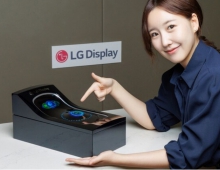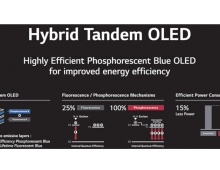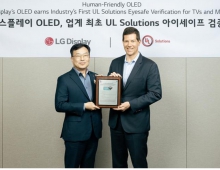
LG Display Makes Huge Investment in OLED Panels
LG Display said Friday it planned to invest close to $9.0 billion in a new plant to produce organic light-emitting diode (OLED) displays, anticipating a surge in demand for panels for large-screen TVs and flexible wearables. The company will invest KRW1.84 trillion to begin building a new panel plant in Paju, Gyeonggi Province, Korea, with production expected to commence in the first half of 2018.
The P10 plant will mainly produce both large-size OLED TV panels and flexible OLED panels for smartwatches and automotive displays.
The construction of the P10 building, the foundations for the clean rooms and infrastructure for water and power supplies and will begin this year. The total investment in the P10 plant is expected to reach more than KRW10 trillion, and with LG Display gradually expanding the scale of the production line based on customer demand and market conditions.
The completed plant will cover an area of 382m x 265m, which is equivalent in size to 14 football fields, and will be 100 meters high. Plans call mostly for the installation of large size OLED lines that will be 9th generation or above along with flexible OLED lines at the new plant. The first production line is scheduled to start mass production in the first half of 2018.
The company is expecting the lines will produce OLED in every product segment, including ultra large-size products as well as future products such as flexible and transparent displays. Dr. Sang Beom Han, CEO and President of LG Display said.
Market research firm IHS forecasts the global OLED panel market will grow to $29.1 billion in 2022 from $8.7 billion in 2014.
LG Display has already announced it will invest KRW1.05 trillion in a 6th generation flexible OLED production line in Gumi, Gyeongsangbuk Province. The 6th- generation production line will produce 7,500 sheets per month and is expected to start mass production in the first half of 2017.
Japan's Nikkei Asian Review reported without identifying sources that LG Display was building a new plant in anticipation of Apple Inc adopting OLED technology for its iPhone in 2018. LG Display has not commented on the rumors, but the company already has a relationship with Apple, reportedly providing it with the OLED displays used in the Apple Watch.
Earlier reports also noted that South Korean rival Samsung Display Co. has also approached Apple in order to secure orders for OLED panels for future mobile devices.
Samsung Display currently dominates the market for smartphone OLEDs, mainly supplying the ultra-thin screens to parent Samsung Electronics and to Chinese smartphone makers.
OLED uses millions of RGB organic LED pixels to generate light without the need of a backlight, producing more precise and deep blacks and colors. OLEDs can also be made flexible and just a few millimeters thick.
RGB OLED is very useful technology for mobile devices and today is most commonly used in smartphones. But OLED TVs currently in the market use white OLED (WOLED), a deviation from the RGB OLED. OLED displays produce colors on their own without the need of a color filter, but a color filter still exists in WOLED TVs. Unlike LCD TVs that use LED as backlighting, OLED displays produce their own backlighting. On the weak side, there are still concerns relate dto the lifespan and durability of RGB OLED screens for big TVs.





















